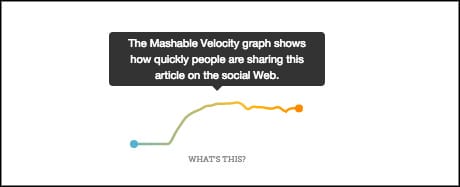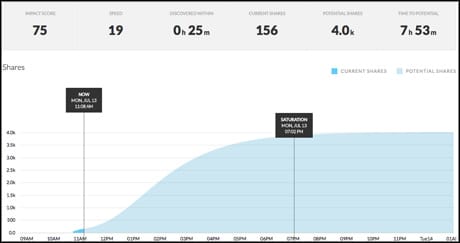Inside Velocity: Mashable's predictive social analytics tool
Mashable has an in-house tool that aims to predict how popular stories will become on social networks – so how is it used by editorial teams?


Mashable has an in-house tool that aims to predict how popular stories will become on social networks – so how is it used by editorial teams?

This article was migrated from an old version of our website in 2025. As a result, it might have some low-quality images or non-functioning links - if there's any issues you'd like to see fixed, get in touch with us at info@journalism.co.uk.
The chatter on social media rarely slows down, and journalists monitoring social sources have worked out a variety of tools and processes to separate the useful tips and discussions from the noise.
At Mashable, one tool that dominates the newsroom is the media outlet's in-house predictive social analytics tool, called Velocity.
Velocity was built "to not only offer a curation tool for what's interesting right now but to actually anticipate what would be interesting to a wide array of readers", Haile Owusu, chief data scientist at Mashable, told Journalism.co.uk.
Mashable’s global news editor Louise Roug explained at last week's news:rewired conference that "we like to think of it as a digital crystal ball" for finding stories of interest from around the social web.
The team behind Velocity built the predictive model using detailed analytics about the online life of Mashable stories after publication.
Velocity now monitors how stories from other publications are shared and interacted with across social networks, and by predicting which of these stories will be popular on social, it allows Mashable users to ride the wave of traffic as well.
It can also gives writers a better idea of how their own just-published stories are likely to perform.
Velocity casts its net wide, monitoring Facebook, Twitter, Pinterest, LinkedIn, Google + and more.
Mashable readers can also spot the algorithm appearing as a graph on article pages on the site, just underneath the headline.

A screenshot of the Velocity graph from Mashable.com. The "What's Rising" section of the homepage is also populated with stories chosen using the predictive algorithm.
But Velocity has been around for a couple of years now, so how is it used in Mashable's newsroom?
"We've built a dashboard that not only makes predictions but also sub divides the content that we crawl," explained Owusu,"so this all gets displayed in a dashboard which all the editorial staff has access to, and in particular some members of the editorial staff whose primary job it is to essentially watch what's in the dashboard."
Mashable's 'watercooler team', who have social media as their beat, get the most use out of Velocity, he said.
But almost every editorial team uses it to follow the conversation on social and make informed decisions about the topics they cover in their stories.

The Velocity dashboard, image from Mashable.
Noticing stories in Velocity that are predicted to do well but aren't written by Mashable staff can result in leads for reporters, as related articles are likely to be high performers on social networks as well.
"Essentially if you participate in the conversation around that topic, what we tend to find is that that yields its own benefit," said Owusu.
Some of Mashable's most popular pieces were sourced through Velocity, including the outlet's most shared story , an account of a WestJet Christmas stunt which has been shared around 1.6million times since publication.
The decision to follow up on stories Velocity picks up ultimately falls to the reporters themselves, and Owusu said it's a matter of ongoing training as well as a balancing act between the nature of the prediction and the different deadlines to which Mashable teams work.
"Watercooler need to respond very fast to something, other teams operate on a longer time scale," he explained.
"How to juggle the predictions against the time windows that the various subgroups are dealing with has been certainly an interesting process for me, but it remains an ongoing one, we're constantly getting feedback from the editorial staff.
"We very confidently believe that the impact on our newsroom is significant," he said.